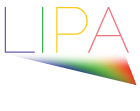LIPA 1H22 Market Update Webinar
What:
An interactive Webinar to present and discuss 1H22 Global Sales, Revenue and Market Data for Commercial/Professional/Education (Non-Cinema) and Cinema/PLF market segments. The first hour will include interactive presentations, followed by a 20 to 30-minute, moderated panel discussion.
When:
Thursday, September 29, 2022
- 22:30-24:00 (Tokyo)
- 21:30-23:00 (Beijing)
- 15:30-17:00 CET (Brussels)
- 14:30-18:00 (London)
- 09:30-11:00 EDT (New York)
- 08:30-10:00 CDT (Texas)
- 06:30-08:00 PDT (Los Angeles)
Who:
Rosemary Abowd
PMA Research
From the PMA website:
By any measure PMA’s team is by far the most experienced of any firm engaged in display market research today. The PMA team includes executives from Hitachi, Toshiba, and InFocus as well as other display-related manufacturers. And with offices in in Asia, Europe and the United States, PMA continually has a complete and balanced view of worldwide developments and trends in the display business.
David Hancock
Omdia
From the Omdia website:
Omdia unifies and harnesses the depth and breadth of expertise from Informa Tech’s legacy research brands: Ovum, IHS Markit Technology [Screen Digest], Tractica and Heavy Reading. We bring you unparalleled, world-class research and consultancy to navigate the now and create the future.
Both Rosemary and David have presented their data summaries and insights to LIPA members a number of times. They bring world class reporting and many years of experience tracking LIPA’s markets and Laser Projection in particular since its introduction more than ten years ago.
Why attend?
LIPA member Representatives and their Management, Marketing and Sales colleagues are invited and encouraged to attend this interactive Global Market Update. It will cover quantitative analysis for the first half of 2022. Unit sales and revenue by major categories, brightness levels, Laser vs. Lamp illumination and other useful metrics. Audience members are encouraged to ask detailed questions during the presentations and then join Rosemary, David, and several LIPA “moderators” in a panel discussion of market, business and technical trends, new products, threats from other technologies and of course, thoughts on the mostly-post-Covid market situation.
Participants may send questions in advance to: billbeck59a2@gmail.com or ask them at any time during the 90-minute session, live or via the chat box.
We look forward to an informative and thought-provoking session and to involving members of your organizations that don’t normally participate in our events and discussions. The session will be recorded if you cannot attend during the scheduled time slot.
We hope to see on September 29th.


